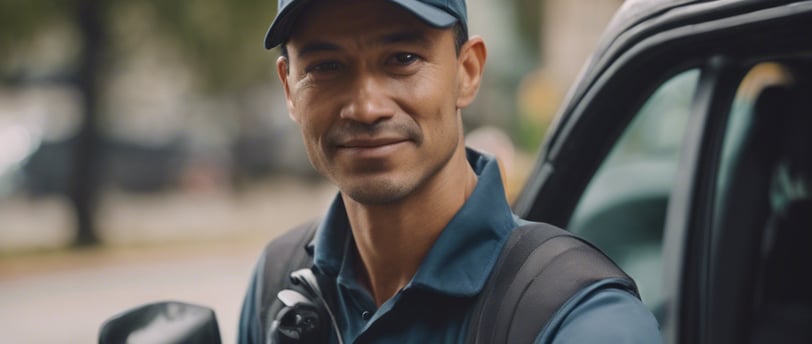The Final Stretch: The Dynamics of Last Mile Deliveries
Last Mile Dynamics
Omar Rebaza
12/5/20232 min read


In the world of logistics, the last mile is where the rubber meets the road—quite literally. Last mile deliveries represent the final and often most challenging leg of a product's journey from warehouse to the customer's doorstep. In this blog, we'll unravel the intricate dynamics of last mile deliveries, exploring the challenges, innovations, and strategies that businesses employ to ensure the seamless completion of this critical stage in the supply chain.
1. The Crucial Significance of Last Mile Deliveries:
The last mile of delivery is not just the final stretch; it's the point of direct interaction between a business and its customers. The success or failure of last mile deliveries can profoundly impact customer satisfaction, brand reputation, and overall customer experience. In an era where swift, reliable delivery is an expectation, mastering the dynamics of the last mile is a business imperative.
2. Challenges in the Last Mile:
Several challenges characterize the last mile of delivery. Urban congestion, traffic delays, diverse delivery locations, and the expectation for near-instantaneous deliveries are just a few. Balancing speed and efficiency with the need for accurate and secure deliveries presents a complex puzzle for logistics professionals.
3. The Rise of E-Commerce and Consumer Expectations:
The exponential growth of e-commerce has further heightened the importance of last mile deliveries. Consumers now expect not only fast and reliable deliveries but also real-time tracking, delivery window customization, and convenient options such as contactless delivery. Meeting these expectations requires businesses to invest in technology and flexible delivery solutions.
4. Technological Innovations Shaping the Last Mile:
In response to the challenges, technology has emerged as a game-changer in the last mile. Route optimization algorithms, GPS tracking, and real-time communication tools empower delivery providers to navigate efficiently through complex urban landscapes. Drones, autonomous vehicles, and innovative last mile delivery solutions are on the horizon, promising to revolutionize the last mile further.
5. Sustainability and Last Mile Efficiency:
The environmental impact of last mile deliveries is a growing concern. Businesses are increasingly exploring sustainable practices, such as electric and eco-friendly vehicles, to reduce the carbon footprint of last mile operations. Sustainable practices not only align with corporate responsibility goals but also resonate positively with environmentally conscious consumers.
6. Localized Solutions and Partnerships:
To address the intricacies of the last mile, businesses are exploring localized solutions and partnerships. Utilizing local delivery networks, establishing pickup points, and collaborating with third-party delivery services are strategies employed to enhance last mile efficiency. Such partnerships enable businesses to leverage existing infrastructure and local expertise.
Summary: Mastering the Last Mile for Success
As the dynamics of last mile deliveries continue to evolve, businesses must adapt and innovate to stay ahead in the competitive landscape. Success in the last mile is not merely about getting products to the doorstep; it's about meeting and exceeding customer expectations, building brand loyalty, and navigating the challenges of modern logistics. By embracing technology, sustainability, and strategic partnerships, businesses can master the last mile, ensuring that the final leg of the journey leaves a lasting positive impression on the customer and secures a competitive edge in the market.
